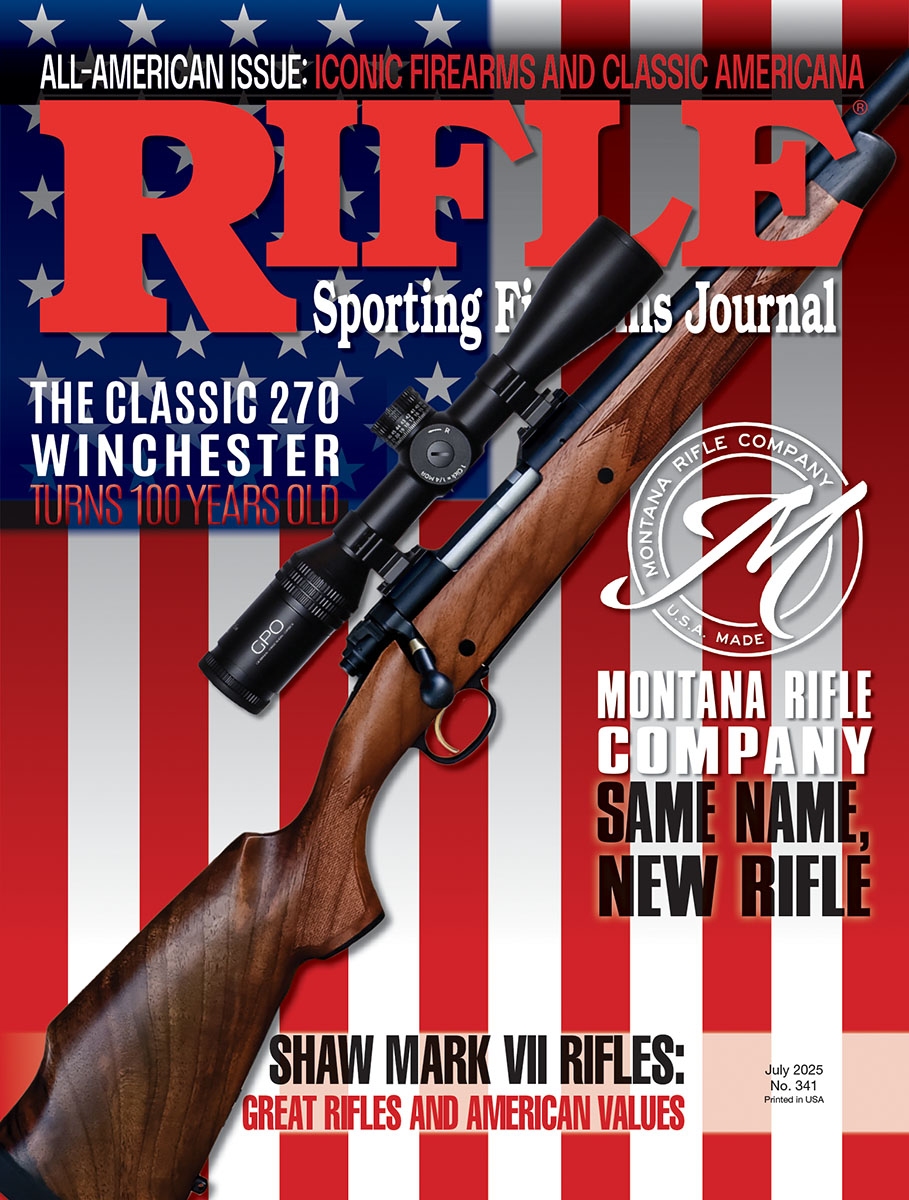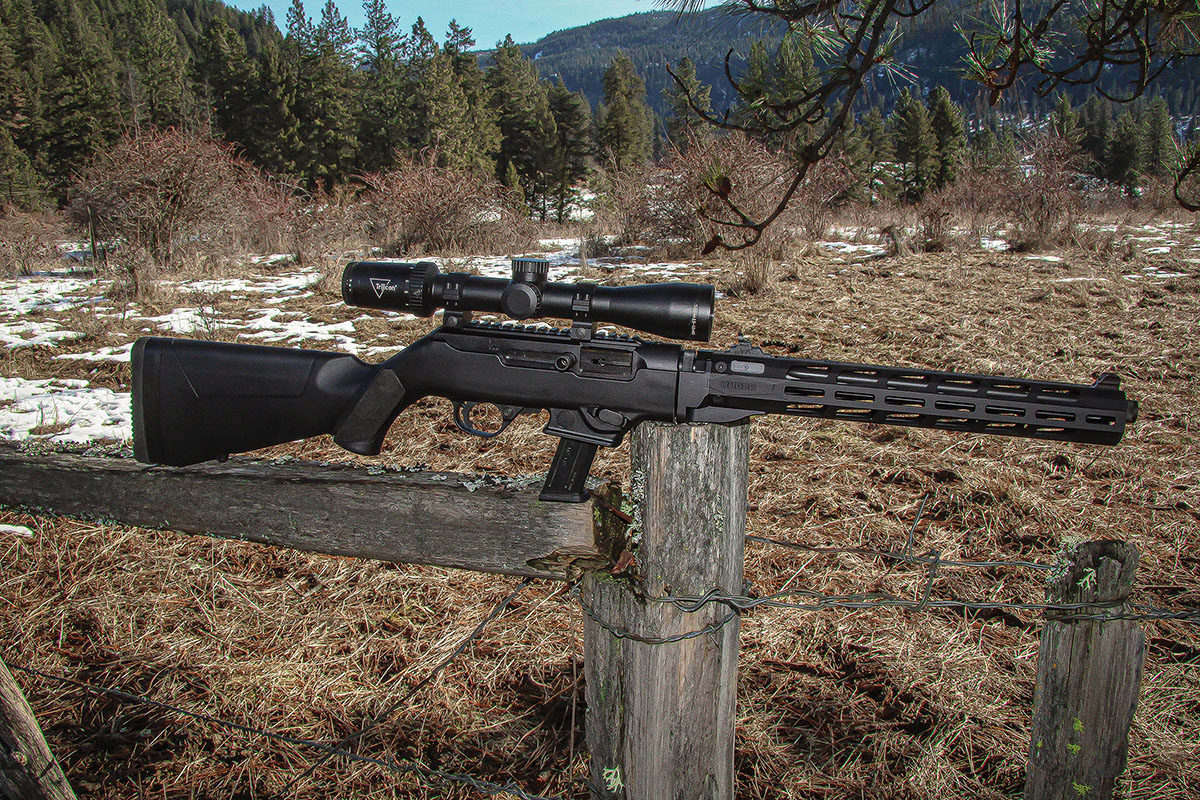
Patrick found the Ruger PC Carbine 9mm Luger just plain fun to shoot. Recoil was negligible and the rifle proved 100 percent reliable with all ammunition tested.
As a company that always seems to have its finger on the pulse of the American shooting public, Ruger’s entry in the PCC fray is unsurprising, though the company offered similar semi-auto carbines as early as 1998. The 9mm Luger PC Carbine was introduced in 2018, with 45 ACP and newer 10mm Auto chamberings following. The Ruger PC Carbine has origins in the Ruger PC-9 (9mm) and PC-4 (40 S&W), but now includes modernized refinements, with an appealing retail price of about $650. Like a lot of popular PCCs, the Ruger can also be set up to feed from common Glock magazines (which I’ll address shortly), though the test rifle arrived with a standard 17-round Ruger SR-Series/Security-9 9mm Luger magazine used in some of their most popular semiautomatic handguns.
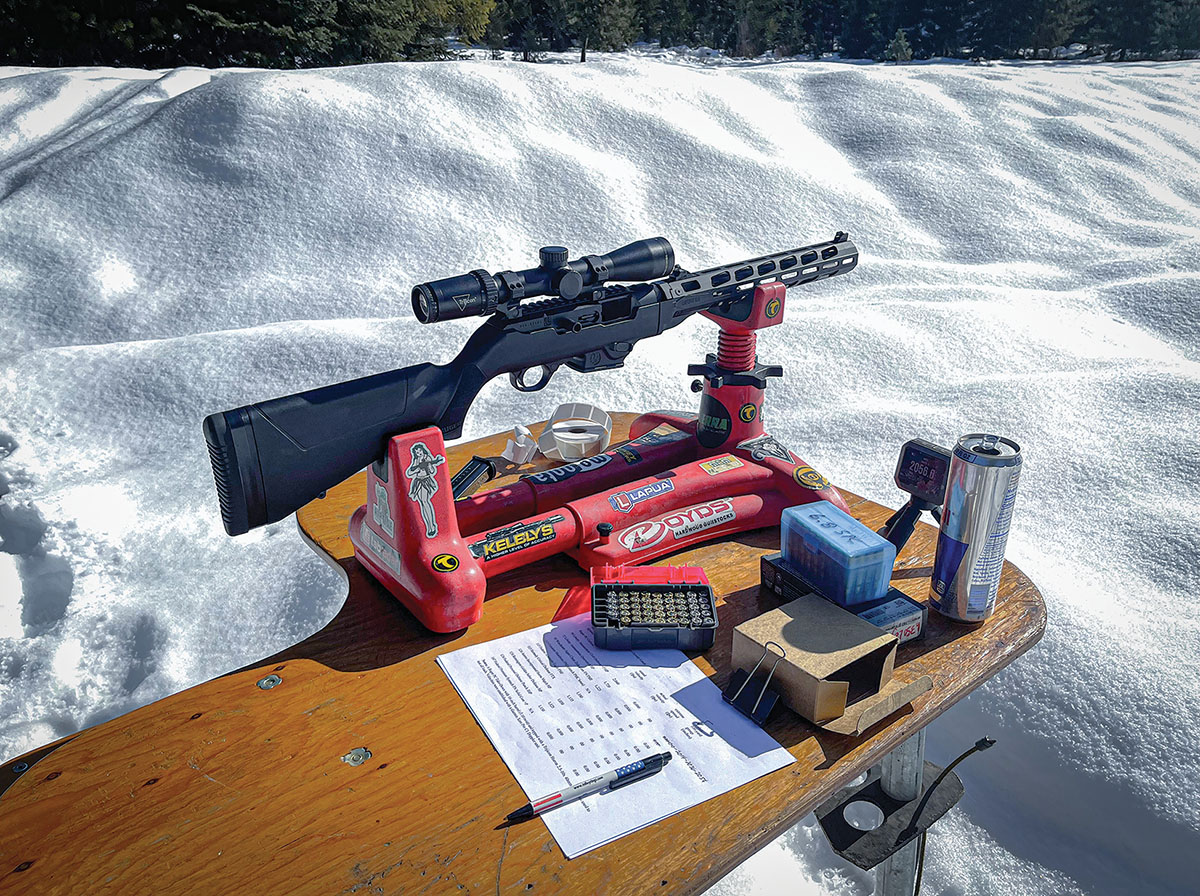
Shooting was conducted from a sturdy bench using a MTM Case-Gard K-Zone Shooting Rest with the first hints spring arriving. Velocities were established with a Garmin Zero C1 Pro Chronograph unit.
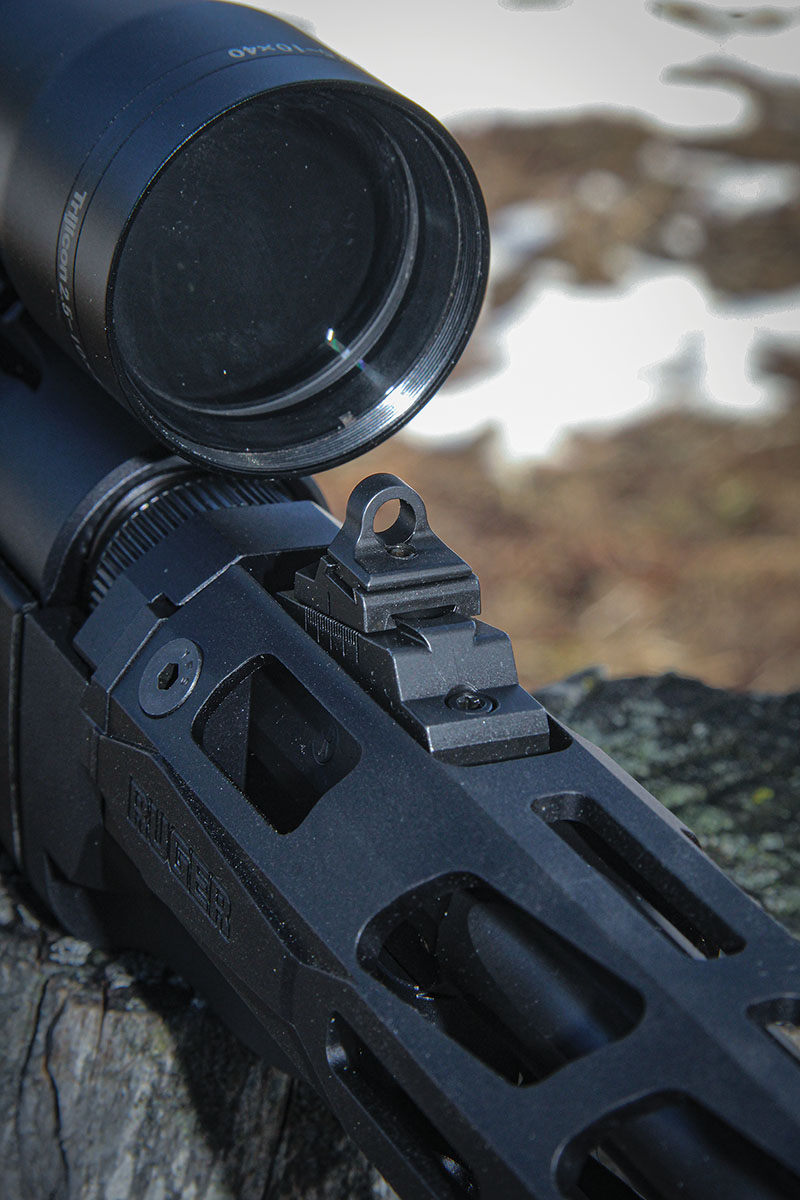
The rear sight found on the Ruger PC Carbine is a ghost-ring design that is fully adjustable using the hex wrench provided by Ruger.
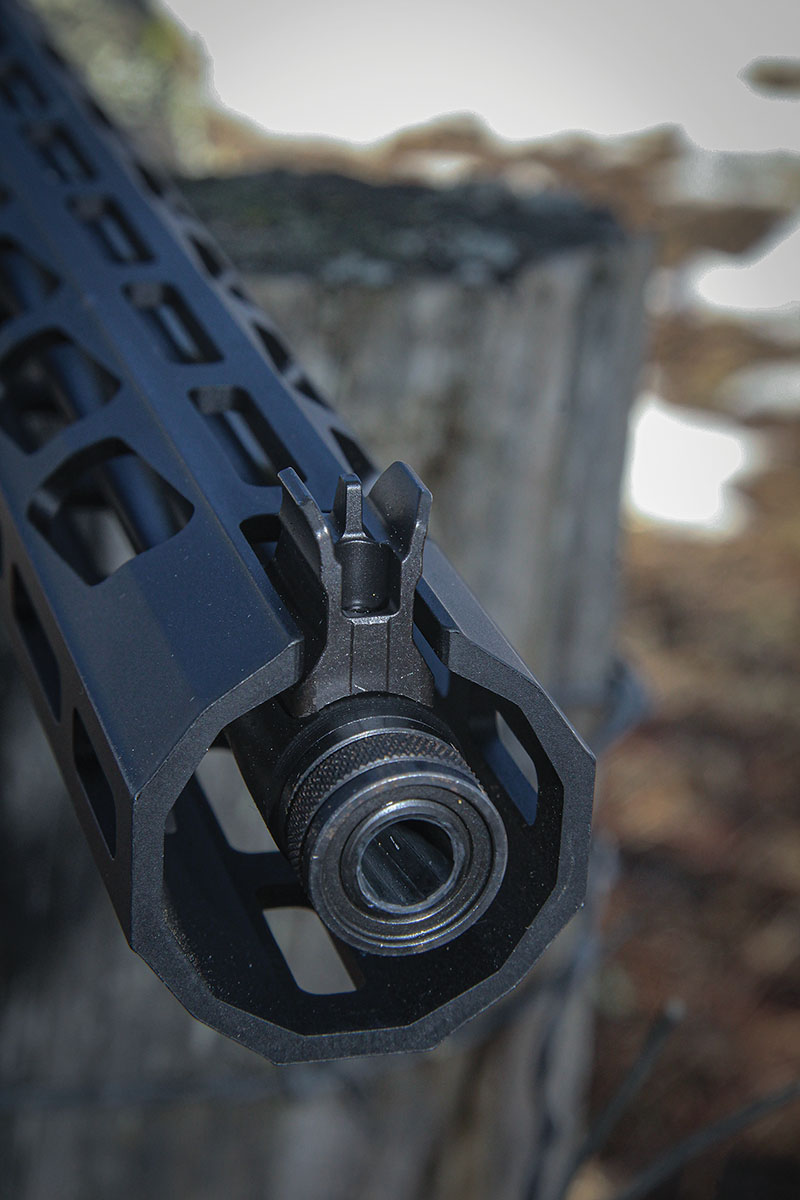
The Ruger PC Carbine’s front sight is a fixed blade protected by opposing “bunny ear” posts that also help align the ghost-ring rear sight.
The PC Carbine here is a takedown rifle that holds a CNC-milled aluminum handguard that is Type III hard-coat anodized and includes M-LOK mounting slots. M-LOK direct-mount accessories are obviously easily added, as well as short lengths of M-LOK-based Picatinny rails for attaching accessories such as lasers, weapon lights, bipods and the like, where needed. The full-length handguard leaves the barrel free-floating. To that point, you’ll find that the barrel isn’t centered in the hand guard, sitting in the upper portion of the encircling shroud. This design element effectively moves the hand farther away from a hot barrel. Ruger engineers are always thinking.
The toolless takedown feature is impressively clever, including a recessed/spring-loaded thumb button directly beneath the barrel chamber, and clockwise quarter-turn barrel turret threads. This is reminiscent of the Ruger 10/22 Takedown and works in the same manner. The bolt must be locked back for takedown. This allows transforming the 34.37-inch carbine into separate 201⁄8-inch butt-stock/receiver and 16¼-inch handguard/barrel assemblies. First of all, it makes it easier to store, or to stash in a bugout bag or backpack. Disassembly and reassembly require just seconds, the barrel snapping into place with an audible click during reassembly. Unloaded, the PC Carbine weighs a few ounces less than 7 pounds (close to 9 pounds with a fully-loaded mag and Trijicon 2.5- 10x 40mm scope added for testing). This is a bit heavier than many PCCs, but not enough to illicit complaints. That extra mass did make the PC Carbine steady during off-hand shooting.
Ruger calls their modified blowback design a Dead Blow Action, which includes a custom tungsten Dead Blow weight that works with the buffer to shorten bolt travel and reduce felt recoil and muzzle rise. This also creates just the slightest delay in cycling to improve reliability, especially when the gun becomes especially dirty. I can attest to this after firing around 300 rounds, the majority cheap aluminum case fodder, through the carbine without cleaning and without a single stoppage. The overall design includes a carrier, tungsten Dead Blow weight and bolt face. The bolt is machined from quality heat-treated chrome-moly steel. The charging handle can be attached on the right or left side of the bolt carrier to your desire, and Ruger supplies a hex wrench to accomplish this task.

Ruger’s PC Carbine is a takedown design that can be taken apart into 20 1⁄8-inch rear and 16 ¼-inch front sections. Disassembly and reassembly require only seconds, and does not require tools.

Though perhaps slightly large for everyday shooting with the Ruger PC Carbon, Patrick mounted a Trijicon Huron 2.5-10x 40mm riflescope while assembling groups. A compact dot-optic would make the perfect combination for this tidy carbine.
The 16.12-inch barrel is cold-hammer forged from chrome-moly steel and features a heavy profile. It is given “ultra-precise” six-groove, right-hand, 1:10-inch rifling to ensure consistent accuracy and bore longevity. The barrel is fluted to shave weight and includes ½x28 muzzle threads to accept a suppressor or flash hider. It comes from the factory with a knurled thread protector.
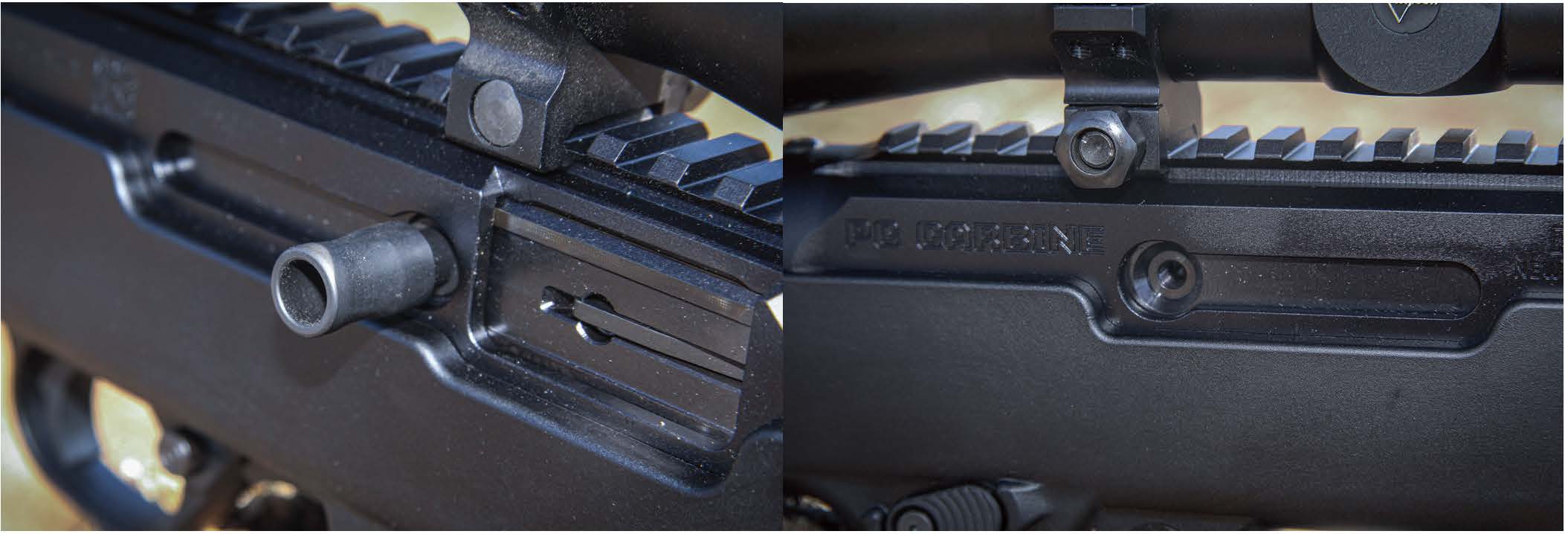
The charging handle of the Ruger PC Carbine can be moved from the right to the left as desired. Ruger even supplies a hex wrench to conduct this operation.
The ribbed magazine release tab can be reversed to allow right- or left-hand activation, though certain caveats apply. The test carbine came with a U.S.-made 17-round Ruger 9mm SR9 magazine with side “windows” revealing how many rounds the magazine holds at a glance. Each PC Carbine comes with an extra magazine-well insert that allows using Glock 9mm magazines, but again with caveats. Using older Glock magazines with only a single latch slot requires leaving the release tab on the left side of the receiver, as these magazines will not properly lock into the release mechanism. Very early versions of Glock magazines utilizing a “U” shaped notch at the rear of the magazine feed lips will not function in the PC Carbine at all. Newer dual-slot Glock magazines allow using the mag release on either side of the receiver. The Glock option allows use of that company’s 33-round stick magazine, or those big 50-round drums. Ruger also sells a magazine well
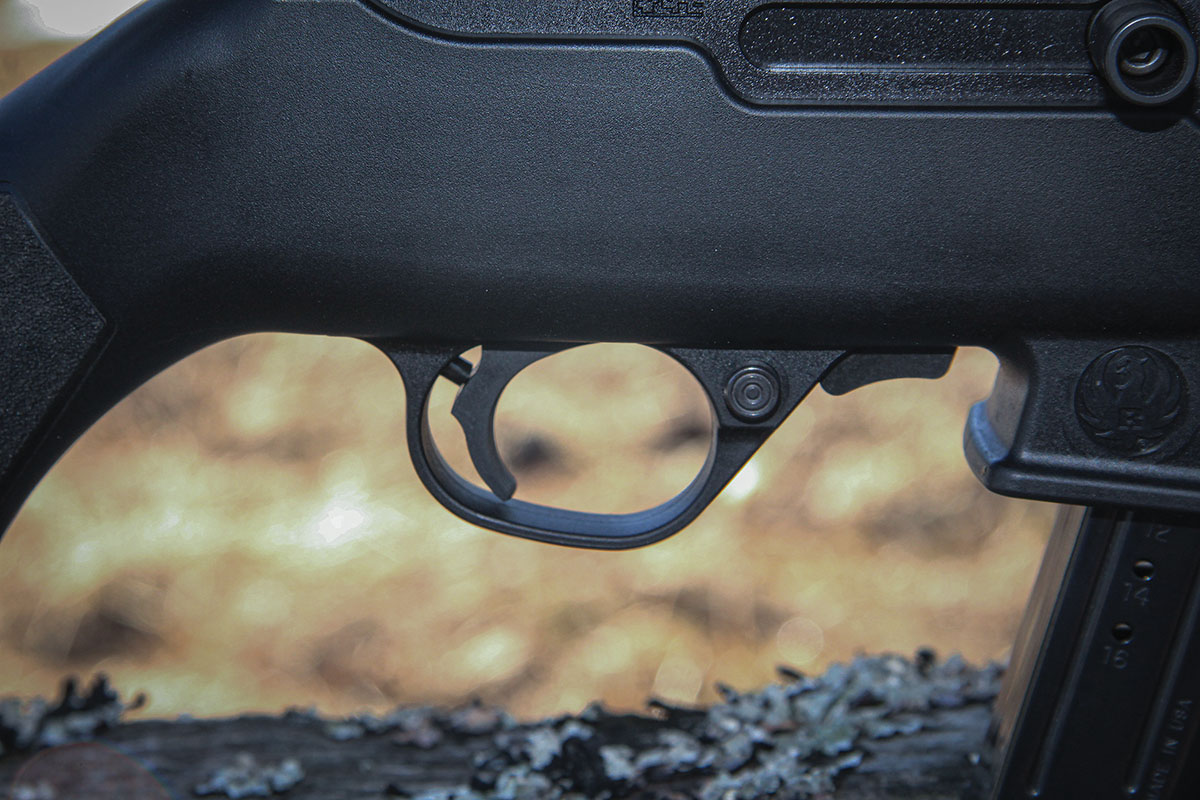
Ruger’s PC Carbine holds a 10/22-style trigger group with a cross-bolt safety in front of the trigger guard. The test rifle included a 3¾-pound break that was crisp and free of creep.
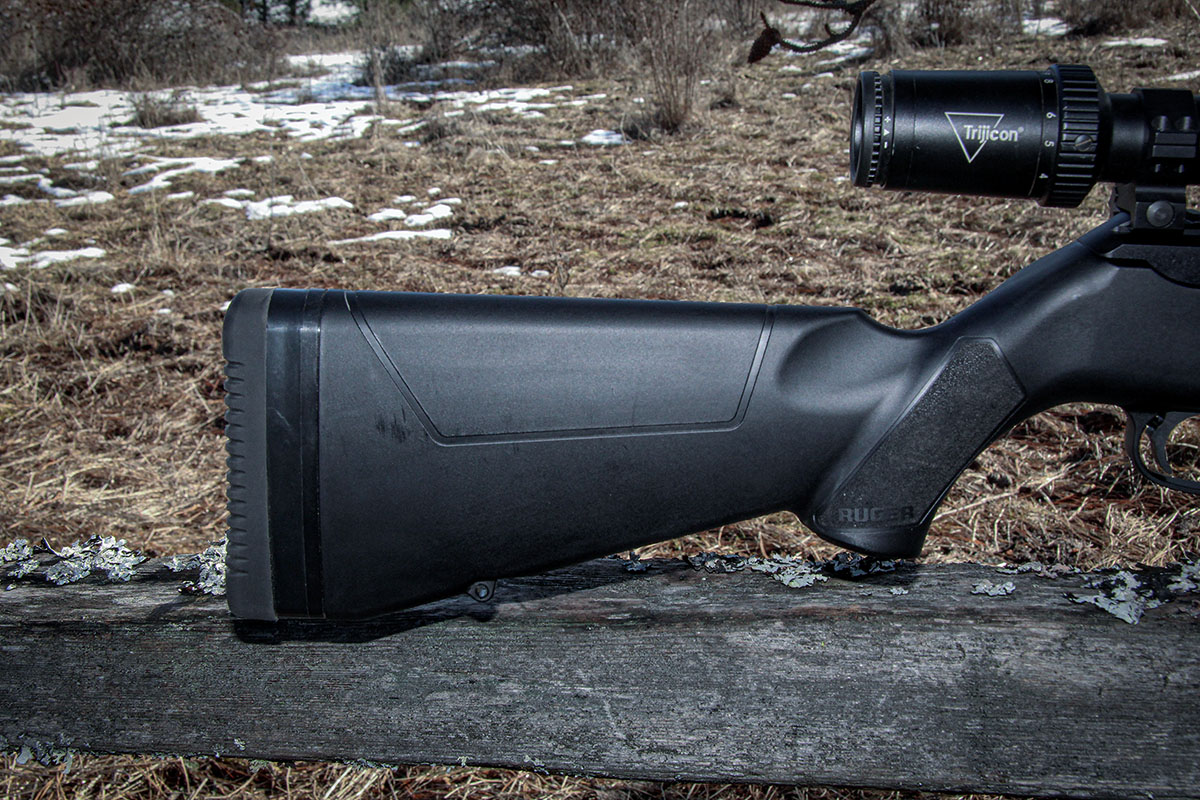
The buttstock of the Ruger PC Carbine includes a soft rubber recoil pad and a stacking spacer system that allows length of pull adjustments between 12.62 and 14.12 inches.
that makes this carbine compatible with Ruger American Pistol magazines. Interchanging magazine wells requires loosening a pair of action screws, separating the chassis and receiver, pressing in the magazine release button and latch and swapping well inserts. The real advantage offered is the ability to interchange PC Carbine magazines with magazines from a compatible handgun, saving some arsenal redundancy.
The high-grade CNC-machined aluminum, Type III hard-coat anodized receiver includes an integrated Picatinny-style rail. This means it is compatible with mounting systems meant for MIL-STD 1913 Picatinny rails. In any case, the 16 slots provide plenty of room to mount any type of aiming system available today, from compact dot scopes to full-sized riflescopes. However, Ruger warns that optic systems that extend more than .275-inch below the top of the rail may not fit the PC Carbine. I experienced no difficulties mounting a compact Trijicon Huron 2.5-10x 40mm in medium 30mm, four-screw rings. This provided perfect eye alignment with a solid cheek weld and brought finished weight to slightly less than 9 pounds with a fully loaded magazine. If I were using this carbine for something like home defense, plinking or small-game hunting (instead of shooting from a bench to test accuracy capabilities), I’d add something like my Lucid Optics compact P8 dot scope.
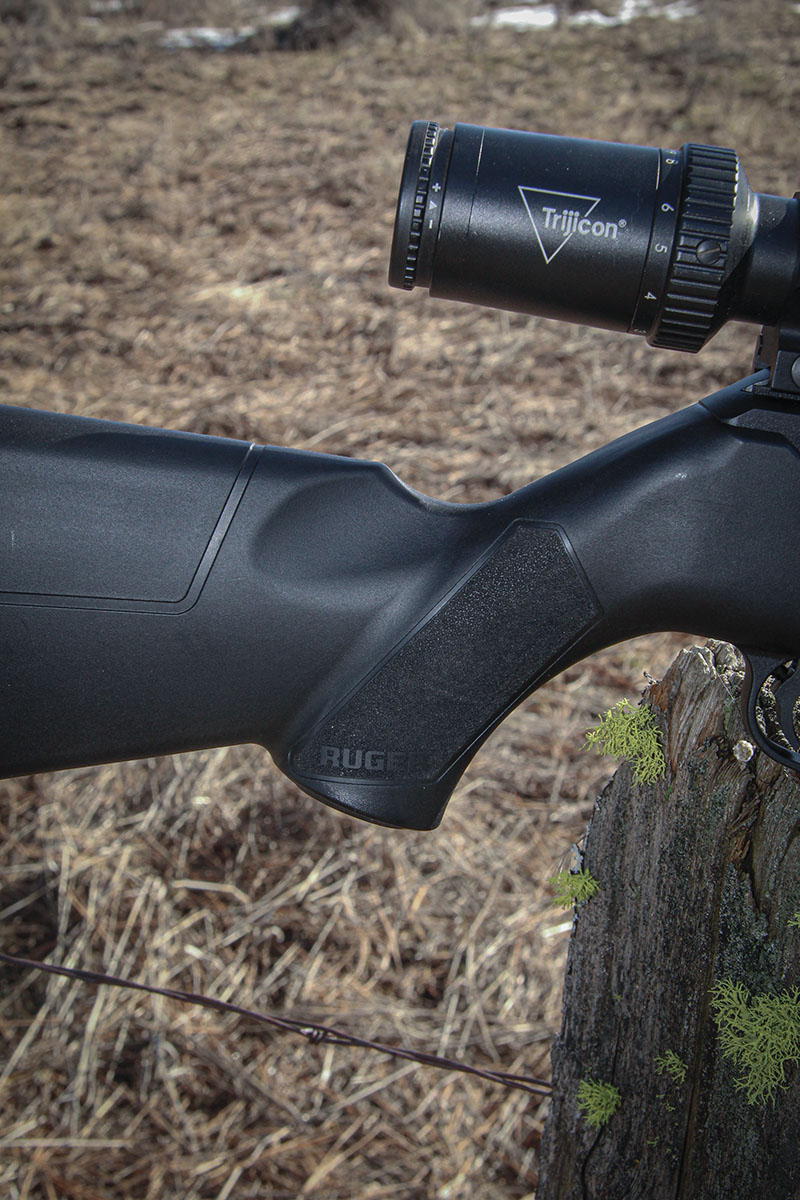
The grip area of the black synthetic stock on the Rueger PC Carbine include textured patches to give shooters a firm purchase while wearing gloves or shooting it in wet conditions.
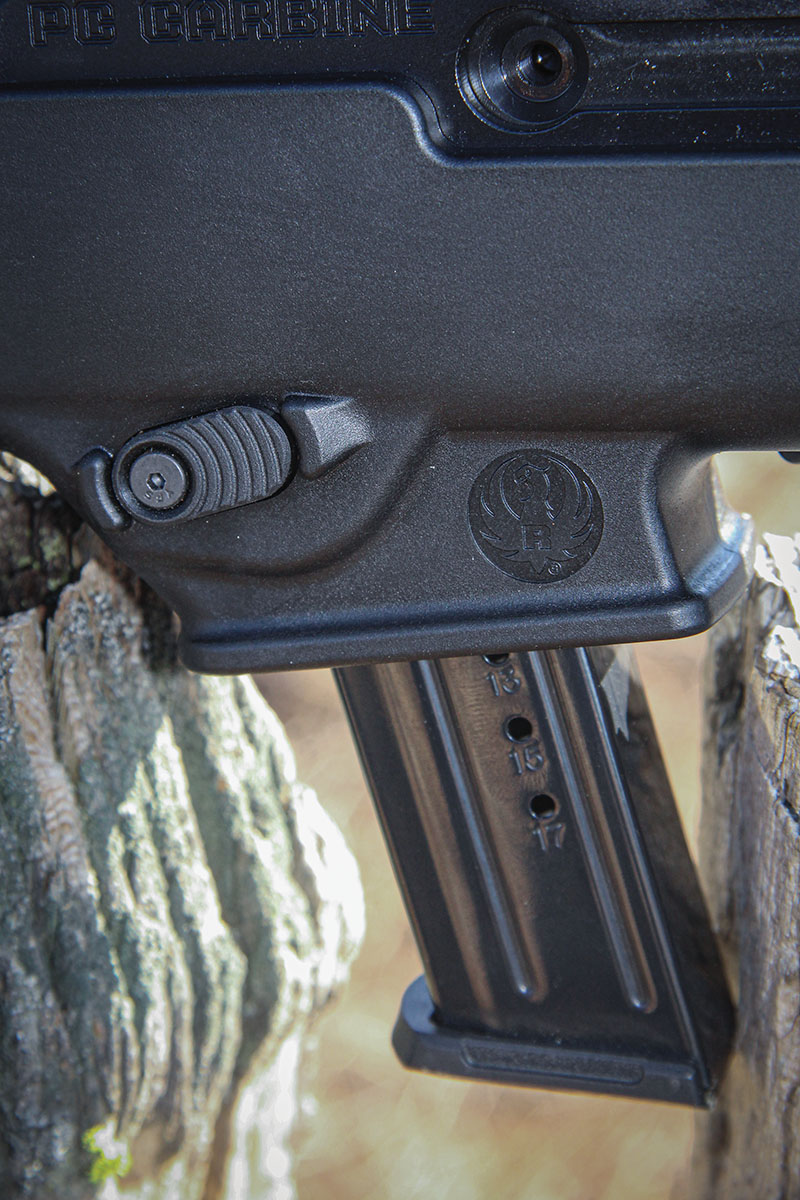
The magazine release button of the Ruger PC Carbine can be moved from the left side to the right to desires. This move also requires magazines that are compatible with the preferred orientation.
The front handguard barrel section of the PC Carbine holds solid iron sights, which consist of an adjustable ghost ring rear aperture and a nonglare front blade protected by “bunny ears.” Both front and rear sights are attached to the barrel itself, not the handguard, which sets the rear sight just in front of the receiver. This forward positioning ensures the sights remain aligned between takedowns. Graduated hash marks make adjusting the rear sight fast and easy, and Ruger supplies hex wrenches for this task. I used these iron sights while becoming acquainted with PC Carbine and found I could maintain minute-of-milk-jug accuracy to 50-70 yards.
Ruger also supplies a hex wrench to manipulate the stock’s butt-pad length-of-pull (LOP) and three-spacer adjustment system. The recoil pad is molded from soft, ribbed rubber, with ½-inch plastic spacers sandwiched between it and the black synthetic stock. The system allows creating an agreeable LOP for nearly any shooter. In my case, that meant adding all of the spacers to create a 14.12-inch LOP. Removing all spacers allows a 12.62-inch LOP, which might make more sense for law enforcement personnel wearing heavy/bulky body armor, or as a training rifle for youth or petite women shooters. The buttstock is molded from a durable, glass-filled nylon material, which includes stipple-textured side grip patches and a rear sling stud molded into the lower butt. Adding a front sling would require utilizing one of the handguard’s M-LOK slots.
The trigger was a welcome surprise, including a light 3¾-pound pull out of the box. The trigger break was also remarkably crisp, with minimal overtravel and a positive reset. If I were to guess, I’d wager Ruger’s refinement of their 10/22 trigger played a hand in this, as the push-button/crossbolt safety mechanism forward on the trigger guard is certainly pure 10/22.
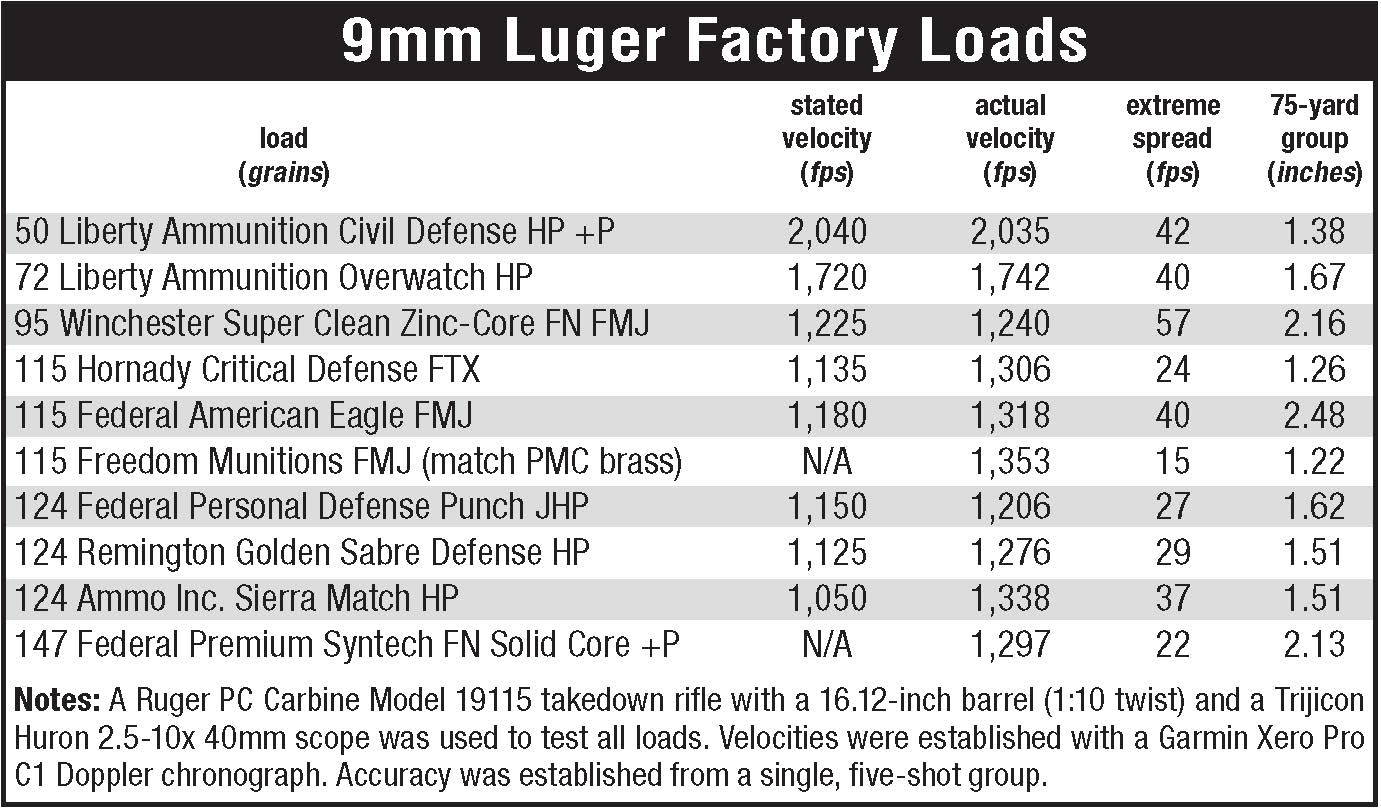
In fact, the Ruger 10/22 comparison is apt all the way around. During initial shooting, first plinking with iron sights to foster familiarity and then sighting in a riflescope, the PC Carbine had a familiar feel. It finally occurred to me that it provides the same handling characteristics as my heavily customized Ruger 10/22s. Also, it is one of the most fun-filled rifles in the shooting world. Chambered in the 9mm Luger cartridge, the range capabilities also remained essentially equal. The Ruger PC Carbine is a pleasure to shoot, with a solid feel that tells you it is built to last. The new, heavier bolt dampened recoil to allow quick follow-up shots in addition to being remarkably reliable, as already mentioned. This continued through 10 disparate factory test rounds, including aggressive self-defense hollow points and a flat-nose heavyweight.
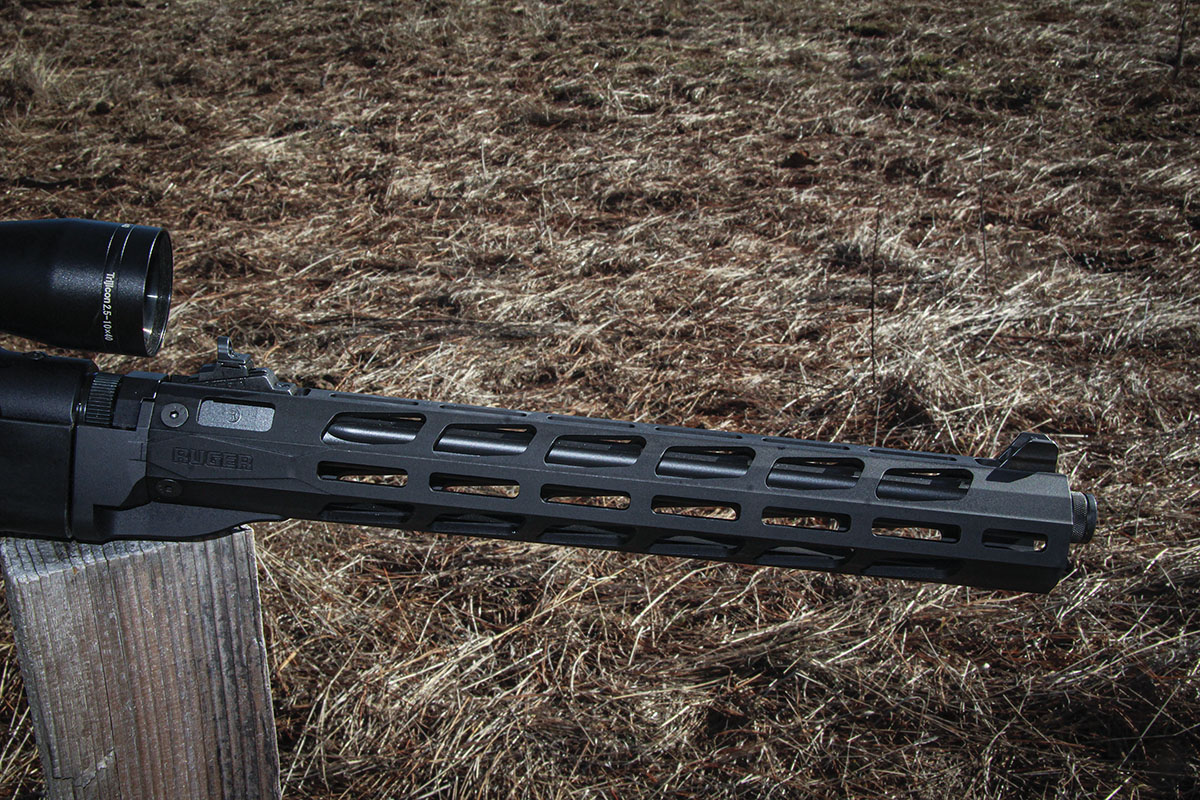
Ruger’s PC Carbine includes a milled-aluminum handguard with M-LOK slots to accept compatible accessories. It is Type III hard anodized for durability and results in a fully-floated barrel, which sits in the uppermost portion of the shroud to move the hand away from a hot barrel.
Owning several 9mm Luger handguns of various dimensions, I had a thorough selection of factory ammunition on hand to test the PC Carbine, from fly-light lead-free options to heavy-duty loads designed for bear backup (a bit suspect in the case of the 9mm Luger). These included Liberty Ammunition’s lead-free 50-grain Civil Defense +P HP and 72-grain Overwatch HP self-defense loads, Winchester lead-free 95-grain Super Clean Zinc-Core FN training loads, remanufactured Freedom Munitions 115-grain FMJ, plinker Federal American Eagle 115-grain FMJ, Hornady 115-grain Critical Defense, Ammo Inc. 124-grain Sierra Match HP, Remington 124-grain Golden Sabre Defense HP, Federal 124-grain Personal Defense Punch JHP, and Federal Premium 147-grain Syntech FN Solid Core +P loads.
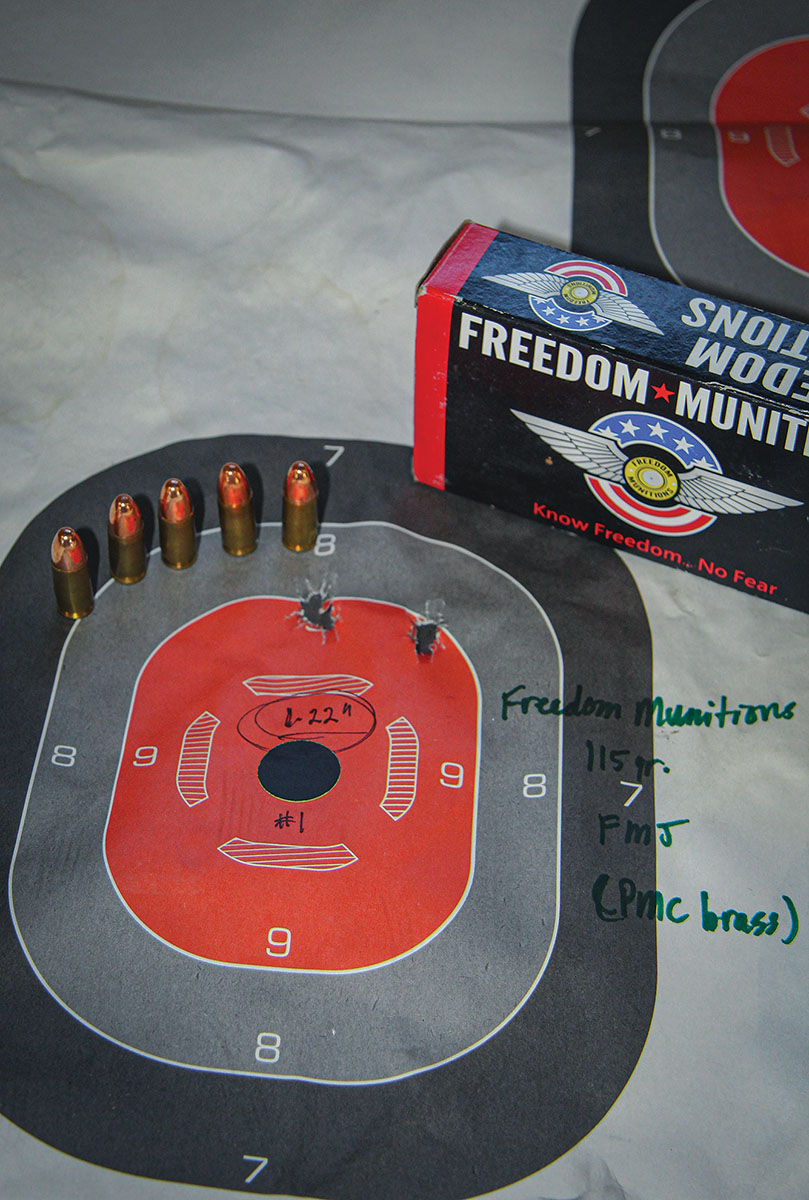
The best group shot from the Ruger PC Carbine 9mm was assembled using Freedom Munitions’ 115-grain FMJ loads. That group measured 1.22 inches at 1,353 fps. Patrick matched up PMC headstamps from the random brass used for these remanufactured loads.
I shot the PC Carbine from a bench atop an MTM Case-Gard K-Zone rifle rest on a beautiful late-February day hinting at coming spring. The target was set at 75 yards in diffidence to the 9mm Luger pistol cartridge. Loads that gained ground over advertised velocity via the 16-inch barrel showed increases of just 56 to 288 fps, with 161 fps about average (save those rounds that came up about equal). I expected more velocity gain than this, which makes me question advertised velocity claims, or wonder if, like the 22 LR, the added friction of additional barrel length actually erodes velocity from a relatively weak cartridge like the 9mm Luger.
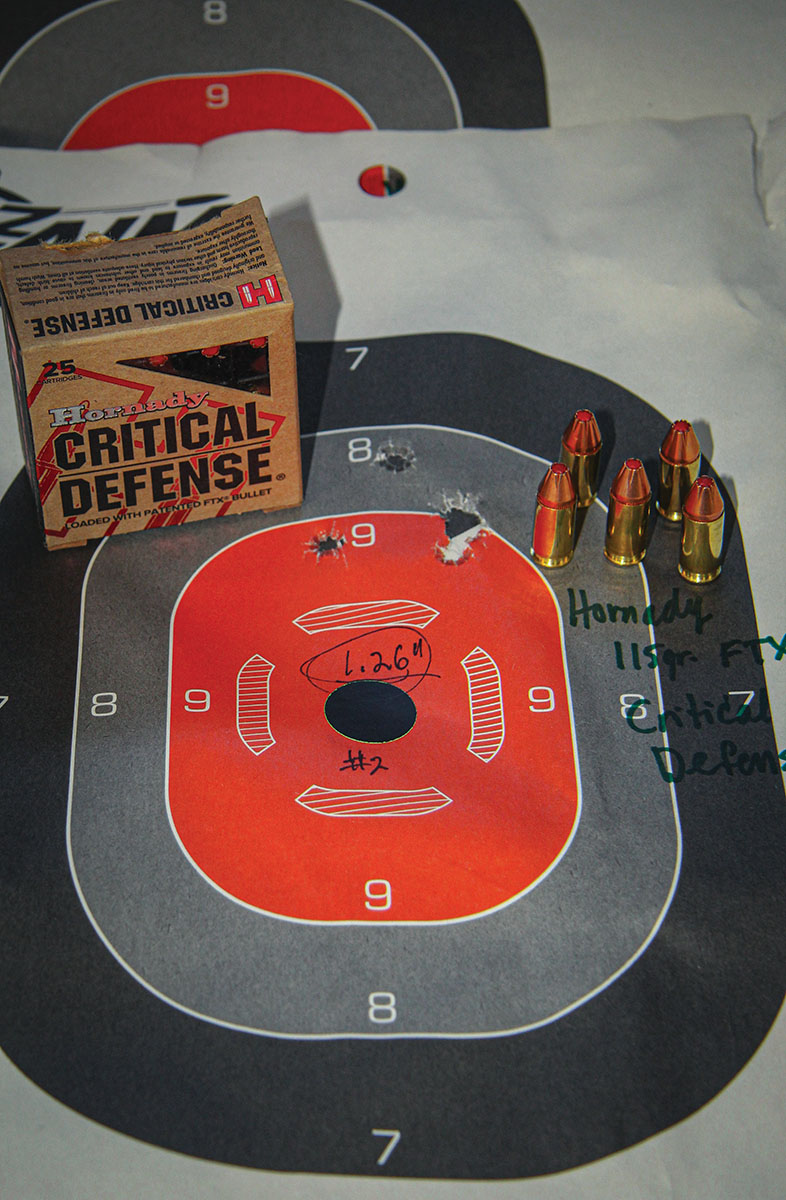
Hornady’s 115-grain FTX Critical Defense ammunition produced a 1.26-inch group sent at 1,306 fps from the Ruger PC Carbine, the result of five shots fired from 75 yards away.
Accuracy proved highly satisfying, or better than I expected from a takedown firearm, with just a couple of exceptions. There was no particular pattern to how the five-shot groups formed: i.e., no first three shots tight with subsequent fliers. For the most part, loads producing the highest extreme velocity spreads also produced the largest groups. The tightest groups hovered around 1¼ inches, with the largest groups measuring greater than 2 inches. The rifle did not seem to show a preference for any particular bullet type or weight, shooting as well with FMJs as hollow points.
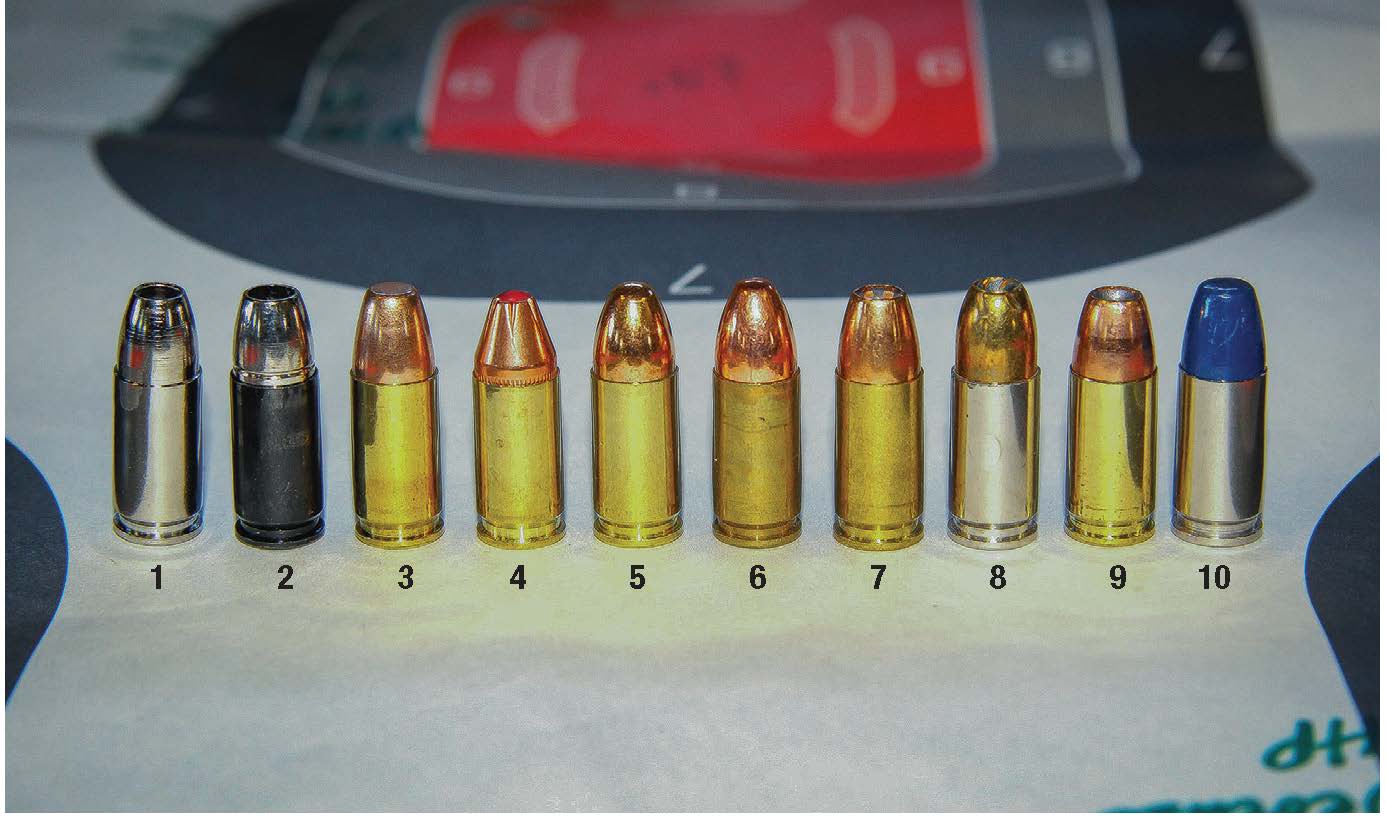
Factory ammunition used to test the Ruger PC Carbine included: (1) Liberty Ammunition 50-grain Civil Defense +P HP, (2) Liberty 72-grain Overwatch HP, (3) Winchester 95-grain Super Clean Zinc-Core FH FMJ, (4) Hornady 115-grain Critical Defense FTX, (5) Federal American Eagle 115-grain FMJ, (6) Freedom Munitions 115-grain FMJ, (7) Federal 124-grain Personal Defense Punch JHP, (8) Remington 124-grain Golden Sabre Defense HP, (9) Ammo Inc. 124-grain Sierra Match HP and (10) Federal Premium 147-grain Syntech FN Solid Core +P.
There are some firearms that are simply fun to shoot, and the Ruger PC Carbine in 9mm is one of those. When I took my wife and visiting daughter out to plink during the course of testing, all other available firearms were quickly abandoned when the girls discovered the PC Carbine. They used it to blast Firebird Detonating Targets, to shatter water-filled jugs and to rapidly fire-pulverize lengths of logs stabbed into snowbanks. The PC Carbine also poses more practical and serious applications. For instance, I can’t imagine a more foolproof home-defense weapon than the PC Carbine, which is easy for any shooter to manipulate under pressure and 100 percent reliable. It would also make an ideal survival weapon, easily stashed on a wilderness boat or bush plane to shoot rabbits or small deer with until rescue arrived, or should the much-anticipated Zombie Apocalypse actually arrive.
Ruger, unsurprisingly, has done it again, producing what promises to become another iconic firearm right up there with the Ruger 10/22 or the Mark III pistol. This is a solid, well-made firearm, and the price is certainly right.


















